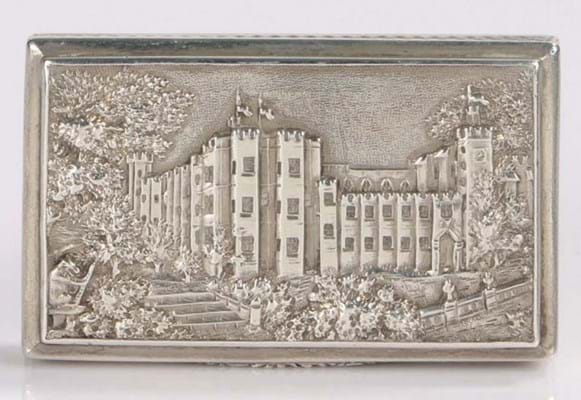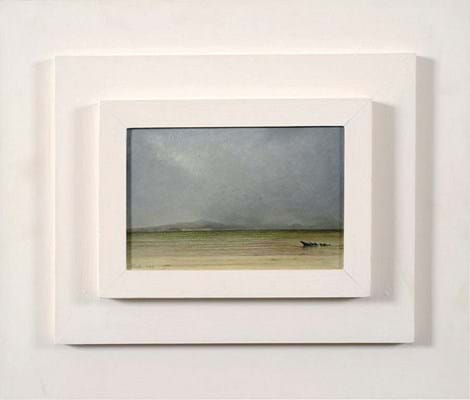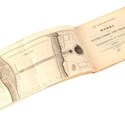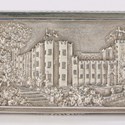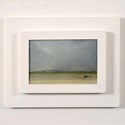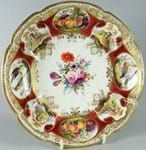During the early 20th century, strides were made across the Western world to develop domestic clocks that would operate on battery power.
On the eve of the First World War, two Frenchmen, Maurice Favre-Bulle and Marcel Andre-Moulin, joined forces to develop the Bulle electric clock. From 1920, the year it was patented, to 1952, it is estimated that around 300,000 clocks were produced.
An early 20th century example, encased in a veined Rosa Portugal marble case, is priced at £1850 from Carlton Clocks in Little Chalfont, Buckinghamshire.
Marc Isambard Brunel’s (1769-1849) own copy of a booklet on the Thames Tunnel, the 19th century tunnel he helped build beneath the river, will feature in a sale of photographica and science instruments at specialist auction house Flints.
Titled An Explanation of the Works of the Tunnel Under the Thames from Rotherhithe to Wapping and illustrated with engineering diagrams and architectural plans, the booklet was produced halfway through the project, probably to drum-up public interest. The copy, which is inscribed to the inside cover in Brunel’s handwriting with extra pencil notes and corrections, is estimated at £400-600 in the October 31-November 1 sale in Stoke Newington, London.
The tunnel was built between 1825-43 using tunnelling shield technology invented by Brunel and Thomas Cochrane, and was worked on by his son, Isambard Kingdom Brunel.
flintsauctions.com or see this item on thesaleroom.com
Kenilworth Castle in Warwickshire was propelled into the public consciousness on the publication of Walter Scott’s 1821 romance novel Kenilworth. The historic, semi-ruined castle became a popular Victorian attraction, appearing on tourist souvenirs like other noted landmarks of the day.
A silver ‘castle top’ snuff box of Kenilworth Castle by Nathaniel Mills, Birmingham 1838, is estimated at £500-700 in a sale of art and antiques at Suffolk saleroom Bishop & Miller, on October 20 in Stowmarket.
bishopandmillerauctions.co.uk or see this item on thesaleroom.com
Born to a wealthy Jewish family, Hannah Gluckstein (1895-1978), or ‘Gluck’ as she called herself, distanced herself from family wealth and patronymic convention.
Adopting a highly mannered masculine appearance, she also refrained from belonging to any artistic stream and resolved to show her work only in solo exhibitions (of which there were five during her lifetime), showcasing her paintings in stepped geometric frames of her own design.
This 5½ x 8in (14 x 21cm) oil on canvas seascape in a ‘Gluck frame’, above, is dated 1969 and comes with a 1989 exhibition label for The Fine Art Society. It will be offered at Lawrences of Crewkerne in Somerset on October 12, guided at £1500-2000.
lawrences.co.uk or see this item on thesaleroom.com




